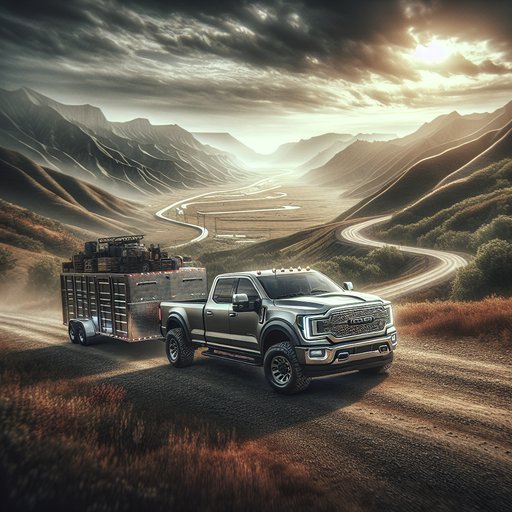
We spent a week testing a 2024 Ford F-150 XLT SuperCrew 4x4 with the 3.5L EcoBoost, FX4, and Max Tow to see how it performs where it matters: towing, hauling, and off-road. Here’s how it handled a mixed, 300-mile evaluation loop.
Our test truck was a 2024 Ford F-150 XLT 4x4 SuperCrew with the 3.5L twin-turbo V6 (400 hp, 500 lb-ft) and 10-speed automatic, equipped with the Max Tow package (3.55 e-locking rear axle, integrated brake controller) and FX4 off-road kit. Door-sticker payload was 1,836 lb; Ford rates similarly equipped trucks to tow over 12,000 lb when properly equipped. Tires were 275/65R18 all-terrains. Conditions spanned 88°F ambient temps at 1,500–3,500 ft elevation.
The tow test used a 7,200-lb equipment trailer (roughly 10% tongue weight) over a 5-mile, 6% grade and interstate crosswinds. The payload run put 1,420 lb of pavers in the bed plus two adults. Off-road, we tackled a 12-mile loop of rutted two-track, a sandy wash, and a rocky climb with 8–10 inch ledges, airing tires to 28 psi. We used a weight-distributing hitch for part of the tow segment to compare squat and stability.
Towing performance is the F-150’s headline. In Tow/Haul, the 10-speed holds gears smartly and downshifts decisively on climbs; the truck maintained 60 mph at 2,800–3,000 rpm on the 6% grade with throttle in reserve. Coolant stabilized at 212–215°F and transmission temps hovered 198–205°F. Without a WDH, rear squat measured 1.2 inches at the fender; with it, squat dropped to 0.6 inch and steering feel improved.
The integrated trailer brake (gain 5.0) delivered smooth, straight stops, and trailer sway control never intervened. Engine braking is modest; manual downshifts to 4th/5th were helpful on descents. Fuel economy towing averaged 10.8 mpg over 120 miles. With 1,420 lb in the bed, the onboard scales feature read within 40 lb of our actual load.
The rear settled 0.8 inch, headlights remained usable, and the leaf pack kept the tail from porpoising over expansion joints. Acceleration remained ample—short freeway merges were no drama—and the 10-speed avoided busy hunting, typically using 6th–8th at 60–70 mph. Brakes felt confident with consistent pedal travel after repeated stops. Bed usability is high: plentiful tie-downs, a useful tailgate step, and bed lighting made loading quick.
Expect 16–17 mpg in mixed driving with a full bed; we recorded 16.2 mpg. Off-road, FX4 hardware (skid plates, hill descent control, e-locking rear diff) proved well-calibrated for moderate trails. In 4A the truck felt composed on washboard; in 4H with the locker engaged, it crested the ledges without wheelspin drama. Hill descent held 2–3 mph reliably.
The long 145-inch wheelbase means breakover can be a limiter—we kissed a skid on a sharp crest—and the low front air dam will scrape if you’re careless. Steering is accurate, the cameras are a genuine aid in rocks, and the shocks resist fade; trail economy landed at 12.4 mpg. Overall, this F-150 configuration is a capable all-rounder: confident up to mid-weight trailers, stable with meaningful payload, and competent off-pavement within FX4’s limits. If you tow at the upper end regularly, add a weight-distributing hitch and consider shorter gearing or Ford’s Heavy-Duty Payload package.
For more trail clearance and approach angles, the Tremor is the smarter step. As tested, it’s a quiet, quick, and highly usable workhorse that matches its spec sheet in the real world.












